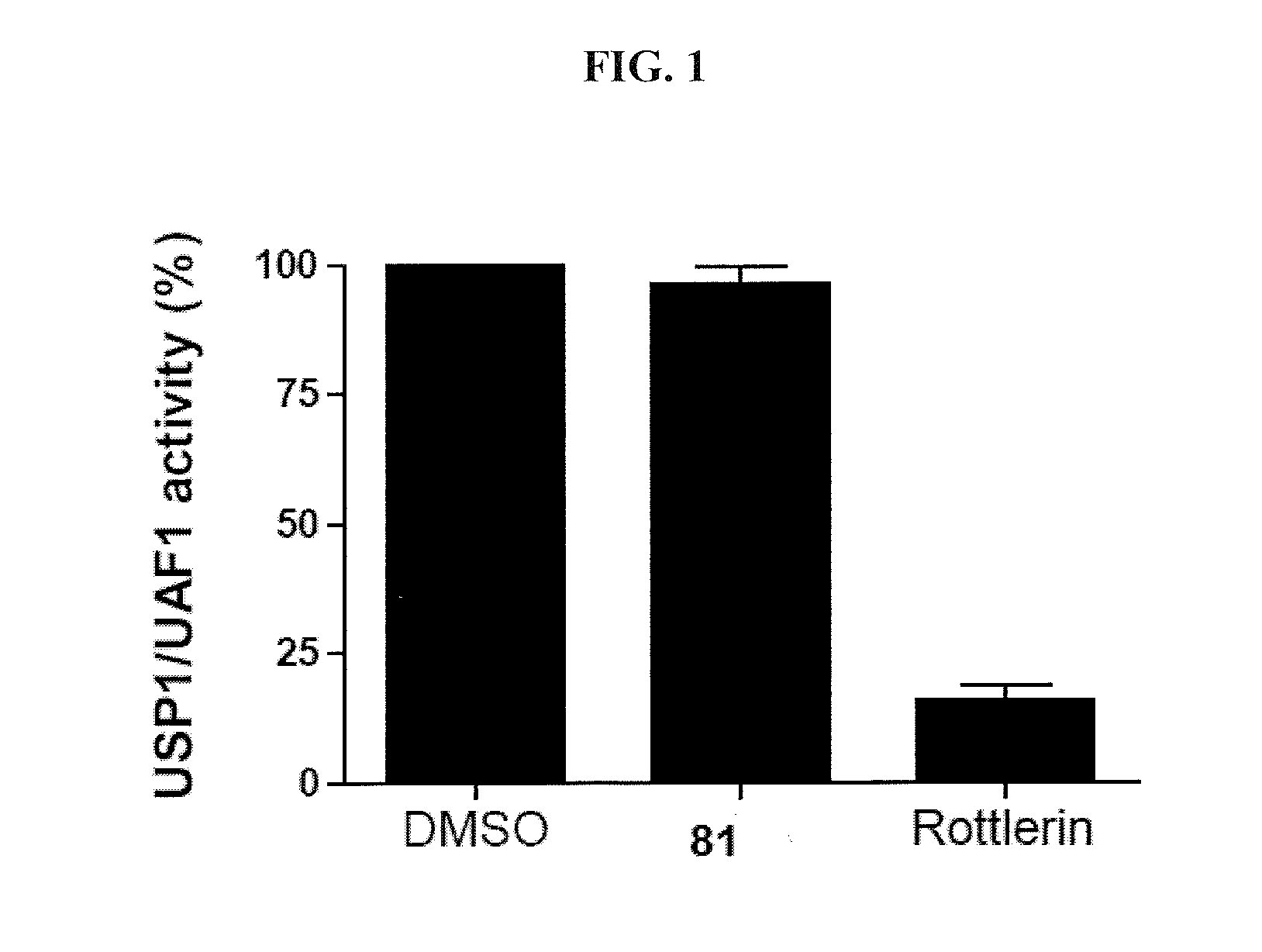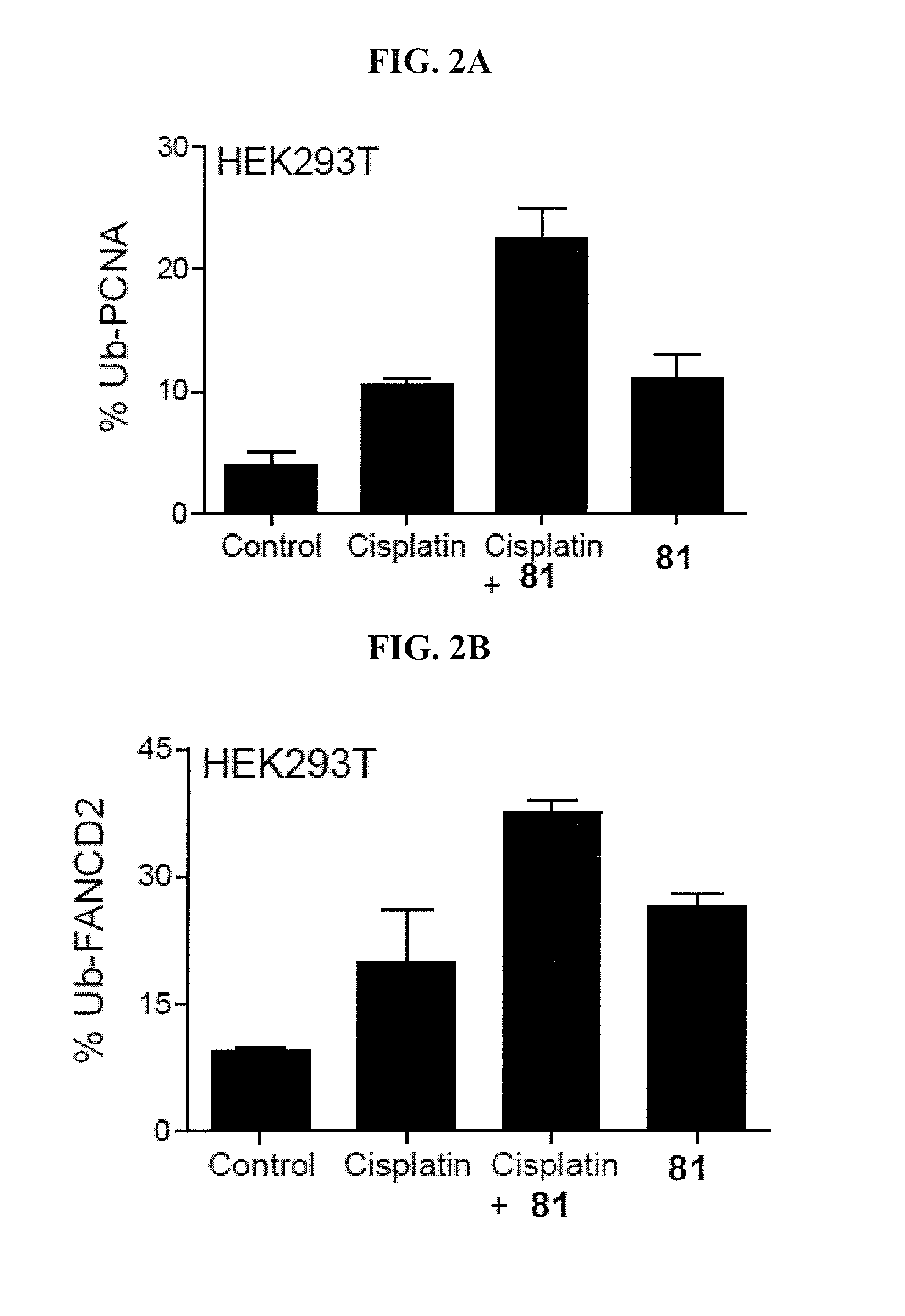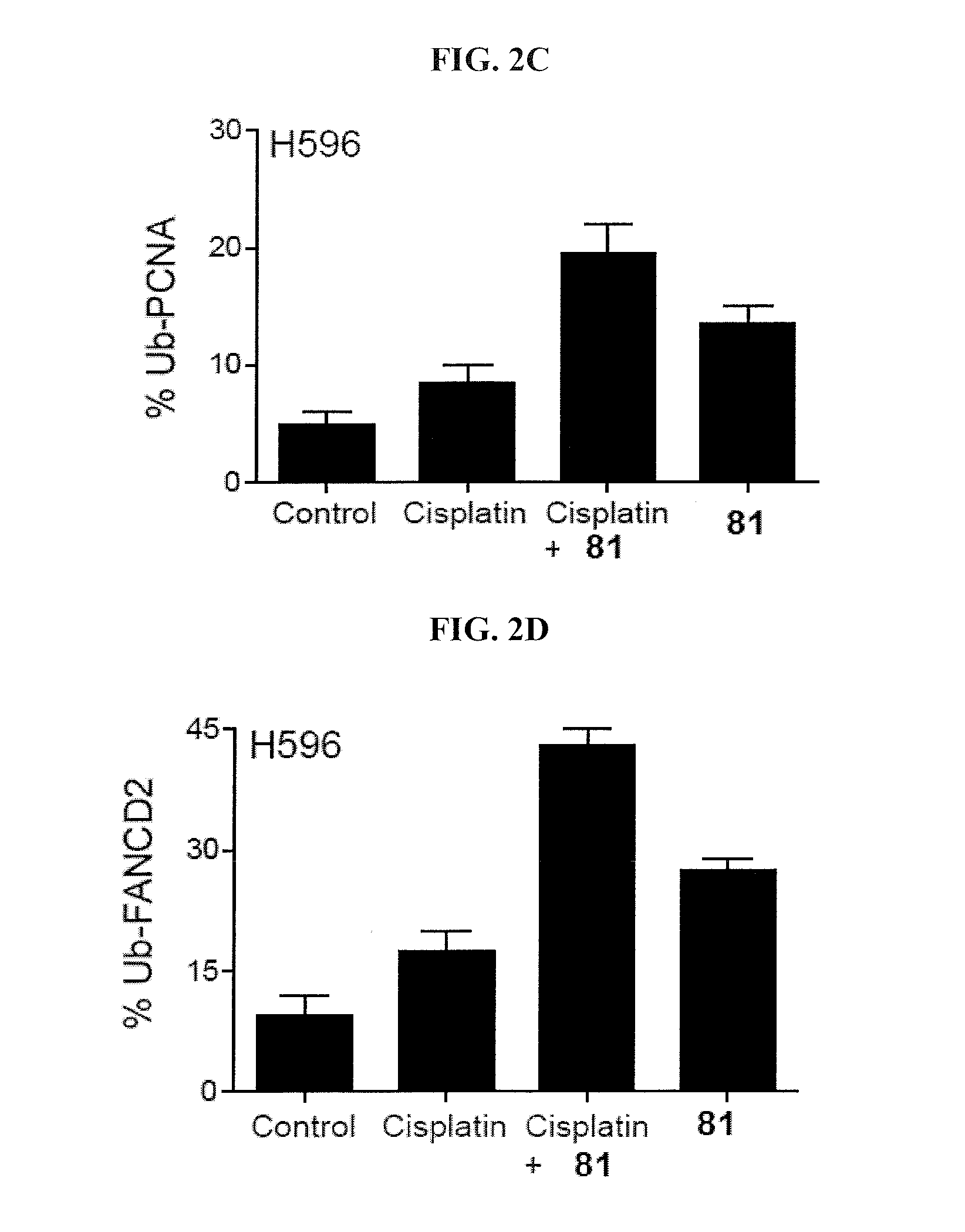Inhibitors of the usp1/uaf1 deubiquitinase complex and uses thereof
a technology of deubiquitinase and inhibitors, which is applied in the direction of biocide, organic chemistry, drug compositions, etc., can solve the problems of mmc hypersensitivity, potency and off-target pharmacology of both compounds
- Summary
- Abstract
- Description
- Claims
- Application Information
AI Technical Summary
Benefits of technology
Problems solved by technology
Method used
Image
Examples
example 1
[0133]This example demonstrates a qHTS assay for USP1 / UAF1 activity.
[0134]USP1 / UAF1 activity was monitored in a fluorometric assay using ubiquitin-rhodamine110. Enzymatic reactions were conducted in an assay buffer (50 mM HEPES, pH 7.8, 0.5 mM EDTA, 100 mM NaCl, 1 mM TCEP, 0.1 mg / mL BSA, and 0.01% Tween-20) that contained 1 nM USP1 / UAF1. Each individual compound was tested at five concentrations in the range of 0.46 to 115 μM. The plates were incubated for 15 min to attain equilibrium, and then the enzymatic reaction was initiated by dispensing 1 μL of Ub-Rho solution (150 nM final concentration). The plates were directly transferred to a ViewLux high-throughput CCD imager (PerkinElmer), where kinetic measurements of rhodamine fluorescence were acquired using a 480 nm excitation / 540 nm emission filter set. The change in fluorescence intensity over a 5-minute reaction period (typically associated with less than 10% substrate conversion) was normalized against no-inhibitor and no-enzy...
example 2
[0135]This example demonstrates a K63-linked diubiquitin gel assay.
[0136]Inhibitors at varied concentrations were added to the assay containing USP at an appropriate concentration (150 nM USP1 / UAF1, 30 nM USP2, 15 nM USP5, 7.5 nM USP7, 255 nM USP8, and 600 nM USP46 / UAF1) and 3 μM K63-linked diubiquitin in a buffer containing 50 mM HEPES (pH 7.8), 0.1 mg / mL BSA, 0.5 mM EDTA and 1 mM DTT. After 1 hour at 37° C., the reaction was quenched by the addition of Laemmli sample buffer. The reaction products were then separated on a 20% denaturing SDS-PAGE gel and stained with Coomassie Blue. The intensity of the individual diubiquitin and monoubiquitin bands were quantified using Quantity One software (Bio-Rad). The enzyme activity was normalized against no-inhibitor control and plotted against inhibitor concentration. The IC50 value was determined by fitting the dose response curve to the equation below using GraphPad Prism (GraphPad Software),
Y=Y0+Ymax-Y01+10X-LogIC50
where X=Log [inhibitor...
example 3
[0137]This example demonstrates determination of Ki using diubiquitin gel assay.
[0138]The inhibition assay solution contained 150 nM USP1 / UAF1, 7-80 μM K63-linked diubiquitin, and ML323 at varied concentrations in a buffer containing 50 mM HEPES, pH 7.8, 0.1 mg / mL BSA, 0.5 mM EDTA, and 1 mM DTT. The reaction was incubated for 10-90 minutes at 37° C., and then quenched by the addition of Laemmli sample buffer at the given time point. The reaction products were separated on a 20% denaturing SDS-PAGE gel and stained with Coomassie Blue. The intensity of the individual diubiquitin and monoubiquitin bands were quantified using Quantity One 4.3.1 (Biorad, Hercules, Calif.). The percentage of the conversion was determined and used to calculate the reaction rate. The Lineweaver-Burk plot was obtained by plotting 1 / v against 1 / [di-Ub] at four different inhibitor concentrations. For noncompetitive inhibition, Ki was determined by fitting the data to the equations shown below using Origin 8 (O...
PUM
| Property | Measurement | Unit |
|---|---|---|
| body weight | aaaaa | aaaaa |
| flow rate | aaaaa | aaaaa |
| flow rate | aaaaa | aaaaa |
Abstract
Description
Claims
Application Information
 Login to View More
Login to View More - R&D
- Intellectual Property
- Life Sciences
- Materials
- Tech Scout
- Unparalleled Data Quality
- Higher Quality Content
- 60% Fewer Hallucinations
Browse by: Latest US Patents, China's latest patents, Technical Efficacy Thesaurus, Application Domain, Technology Topic, Popular Technical Reports.
© 2025 PatSnap. All rights reserved.Legal|Privacy policy|Modern Slavery Act Transparency Statement|Sitemap|About US| Contact US: help@patsnap.com



